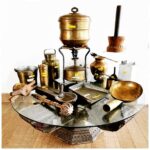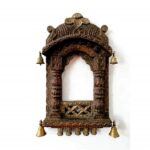Rukmani cooker
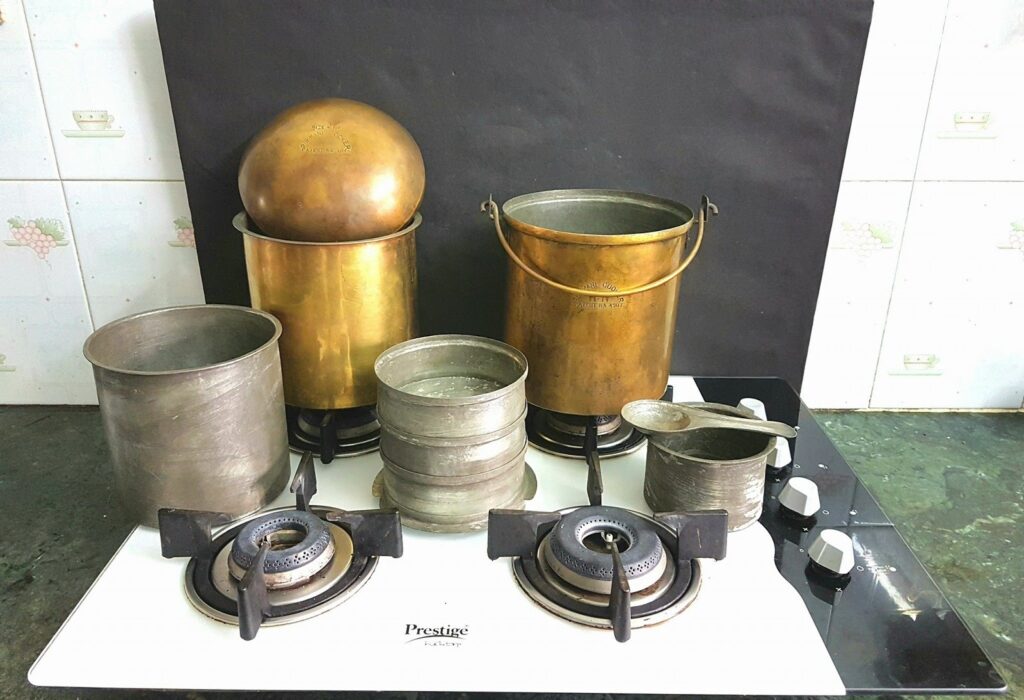
Rukmani cooker:
Rukmani cooker, One of my proud recent find is the legendary Rukmani Patented brass cooker of the 1940’s the forefather of all cookers. First impression the cooker itself looks like a large thooku satti but on careful observation one can find the difference in material, make and markings in it, with numerous attachments all enclosed within it makes it super heavy than it looks, but its an ease to transport all the contraptions inside a vessel which can be carried along.
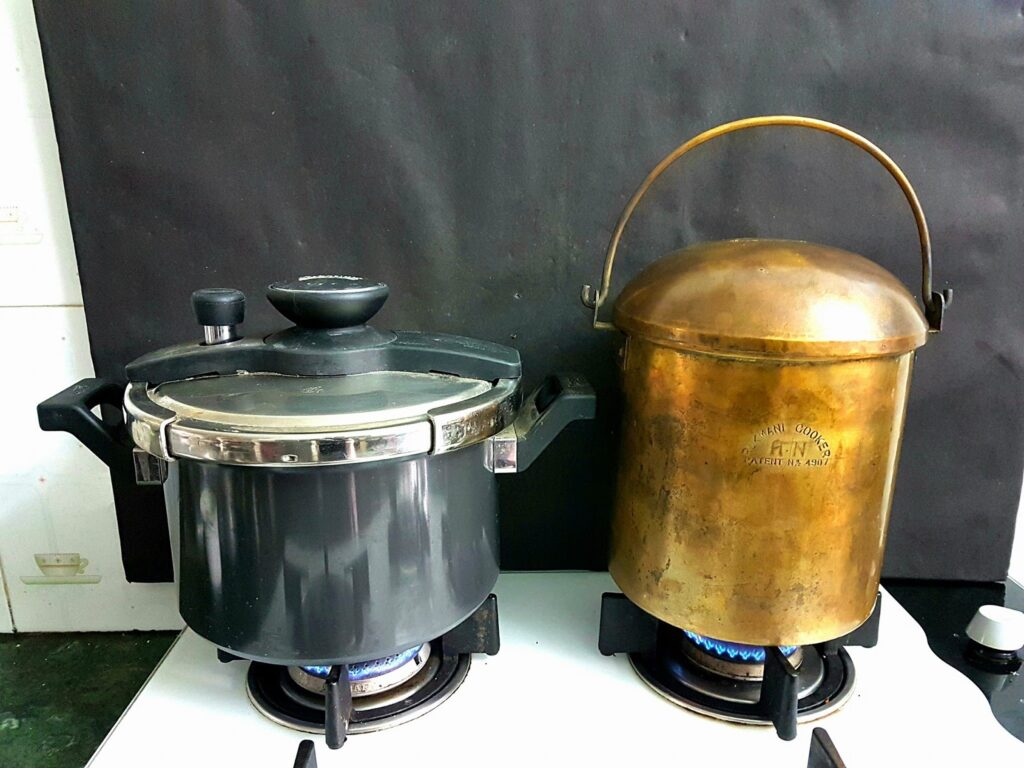
Working Principle:
The Rukmani cooker works on the principle of double boiling where the resultant heat with steam generated is used in cooking foods without pressure on a prolonged slow flame cooking process, there by retaining maximum nutrition along with taste in the foods cooked.

Components:
The inner vessels are all marked as RCC which stands for Rukmani Cooker Company are all made of brass coated with tin to prevent brass tarnishing the foods cooked,
While the cooker itself is pure brass. Totally there are three tier tiffin carrier type vessels which fits one over the other meant for veggies boiling with the lower most vessel having a basal stand incorporated in the vessel itself, apart from it there is a small vessel for lentils and pulses boiling,
And a large size vessel reaching the size of cooker itself is meant for rice cooking, the main body of the cooker is filled with water to 3/4th capacity then a brass vessel fitting the main vessel is lowered in it so the water gets trapped in between the body and the vessel forming a jacketed layer of hot water and steam when heated,
Then the respective food laden vessels are lowered in to it with lid closed securely the cooker is placed on a stove, as the foods are cooked over slow flame gently retaining maximum nutrition with flavours sealed in, the set also has a small round flat ladle which is used to dish out the prepared foods.
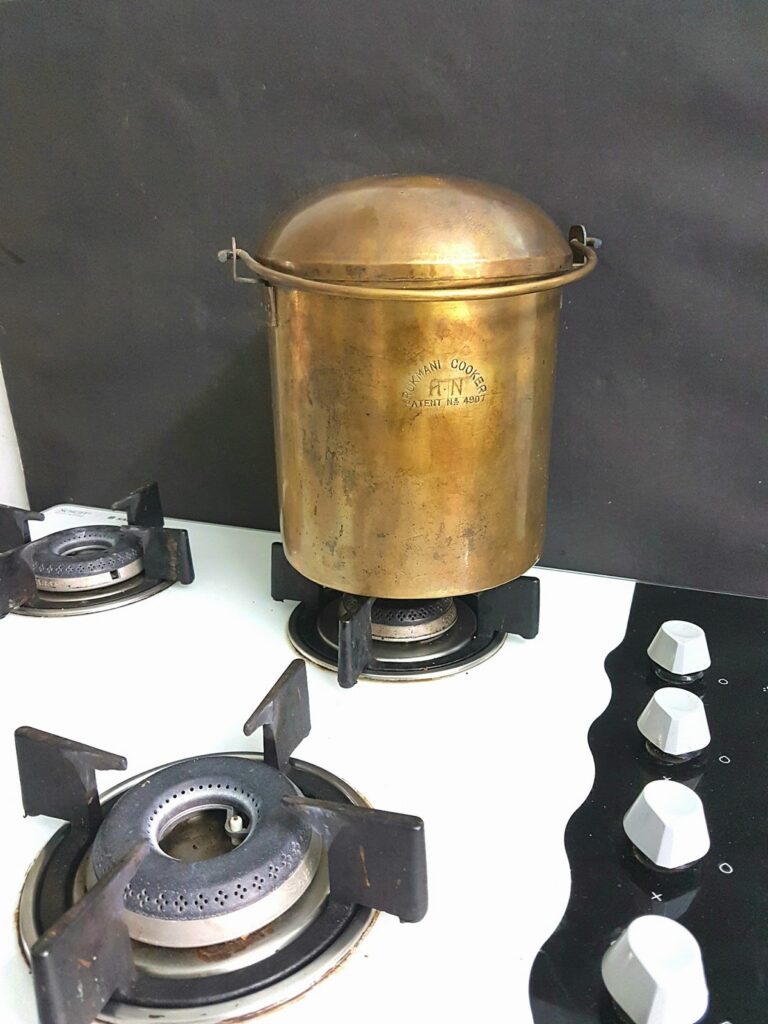
Uses:
Rukmani cooker was an expensive offering among other traditional cooking vessels of those times and thats the reason for the rarity in finding of these cookers, they are bought by the affluent for daily home cooking and make shift cooking like picnics, pilgrimages, tours and by those who stayed out of home in hostels.. Now they find a place in museums sitting silent witnesses of their indispensable service in glorious past..
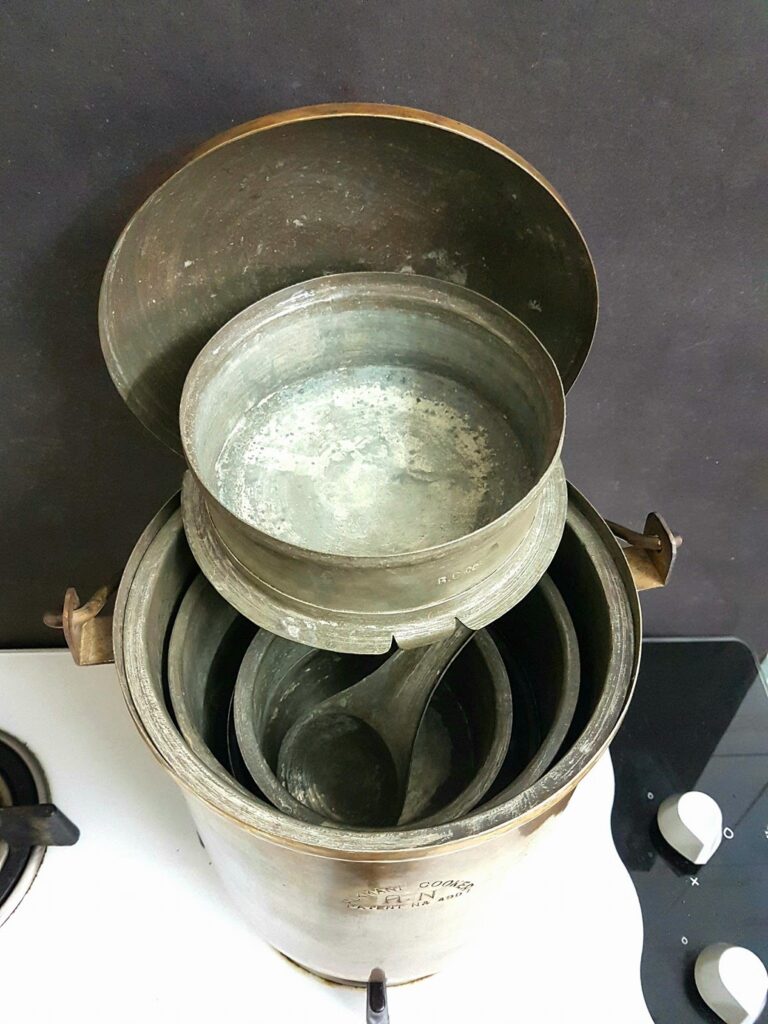

Refer similar cooker article in The Hindu newspaper-




